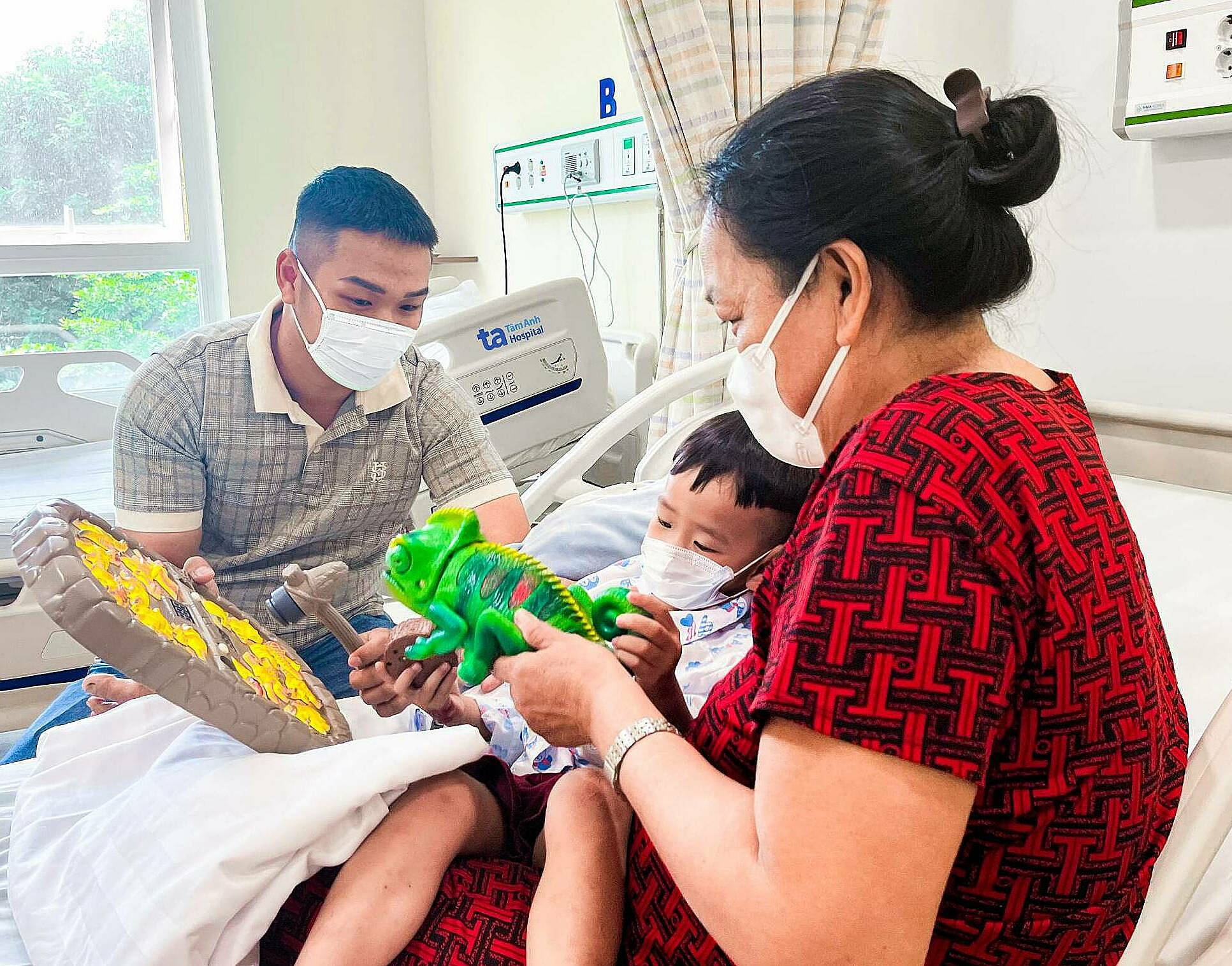Thai has a ventricular septal defect (VSD), a common congenital heart defect. This defect occurs during pregnancy when the wall between the ventricles doesn't close completely, creating an abnormal opening between the left and right ventricles. This allows oxygen-rich blood from the left ventricle to mix with oxygen-poor blood in the right ventricle, increasing pressure in the pulmonary arteries and eventually leading to heart failure. VSDs typically form within the first 8 weeks of pregnancy and persist after birth.
Thai's VSD measured about 6 mm, with a portion covered by the tricuspid valve leaflet, leaving an opening of about 4 mm. While VSDs often close or shrink on their own before the age of 3, Dr. Vu Nang Phuc, Head of the Congenital Heart Department at Tam Anh General Hospital's Cardiovascular Center in TP HCM, explained that Thai's VSD hadn't closed and was beginning to cause heart damage. His left ventricle was showing signs of enlargement and increased pulmonary circulation, which could lead to pulmonary hypertension and heart failure.
Dr. Nguyen Minh Tri Vien, a cardiac surgery consultant at the same center, noted that for small, thin children with a history of respiratory infections like Thai, a traditional sternotomy could negatively impact their airway and prolong recovery. The surgical team opted for a less invasive approach through the right side of the chest, combined with erector spinae plane (ESP) block anesthesia. This technique avoids opening the breastbone, reducing the risk of infection and pain, allowing for faster recovery. Additionally, the ESP block minimizes the need for morphine post-operatively, reducing the risk of addiction, respiratory problems, and increased pain sensitivity.
The team made a 4-5 cm incision on the right side of Thai's chest, measured the VSD, and patched it using a piece of the boy's pericardium. Transesophageal echocardiography was used throughout the procedure to ensure complete closure. Thai experienced minimal pain, sat up a few hours after surgery, and resumed normal eating and activities the following day.
 |
The patient is healthy and active three days after minimally invasive heart surgery. Photo: Ha Vu |
The patient is healthy and active three days after minimally invasive heart surgery. Photo: Ha Vu
According to Dr. Tri Vien, the patient's discharge after 3 days is a positive outcome, as pediatric heart surgery typically requires a hospital stay of 5-7 days, sometimes even a month in cases of malnutrition or infection.
Doctors recommend a nutritious diet for children after surgery, dividing meals into smaller portions throughout the day (8-12 meals instead of 3-5). Parents should encourage light activity and discourage strenuous exercise for 8-12 weeks post-surgery. Minimizing stress, crying, and fatigue is also important. Any constipation or fever should be addressed promptly.
Thu Ha
* The patient's name has been changed
| Readers can submit questions about cardiovascular diseases here for doctors to answer. |












